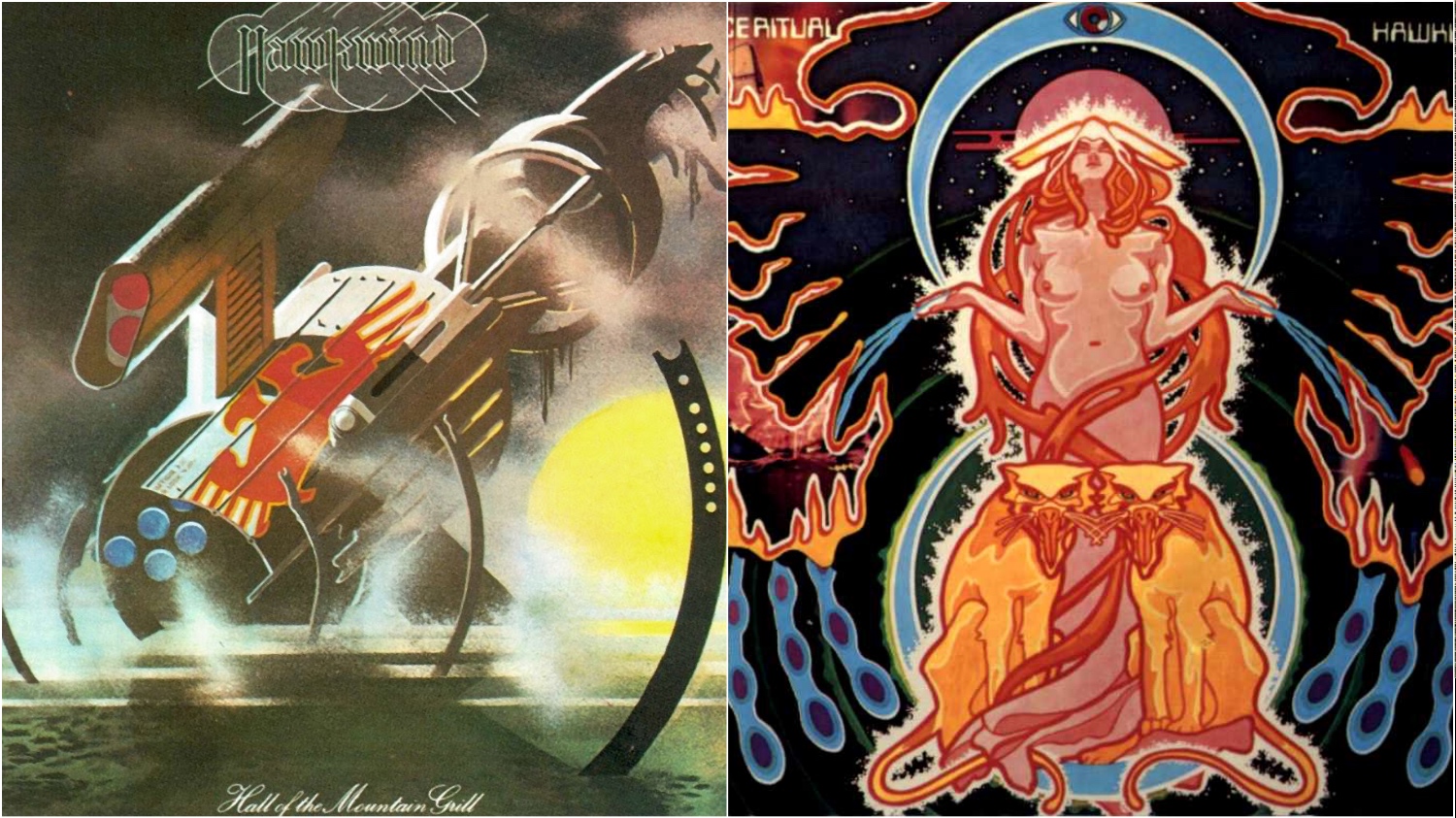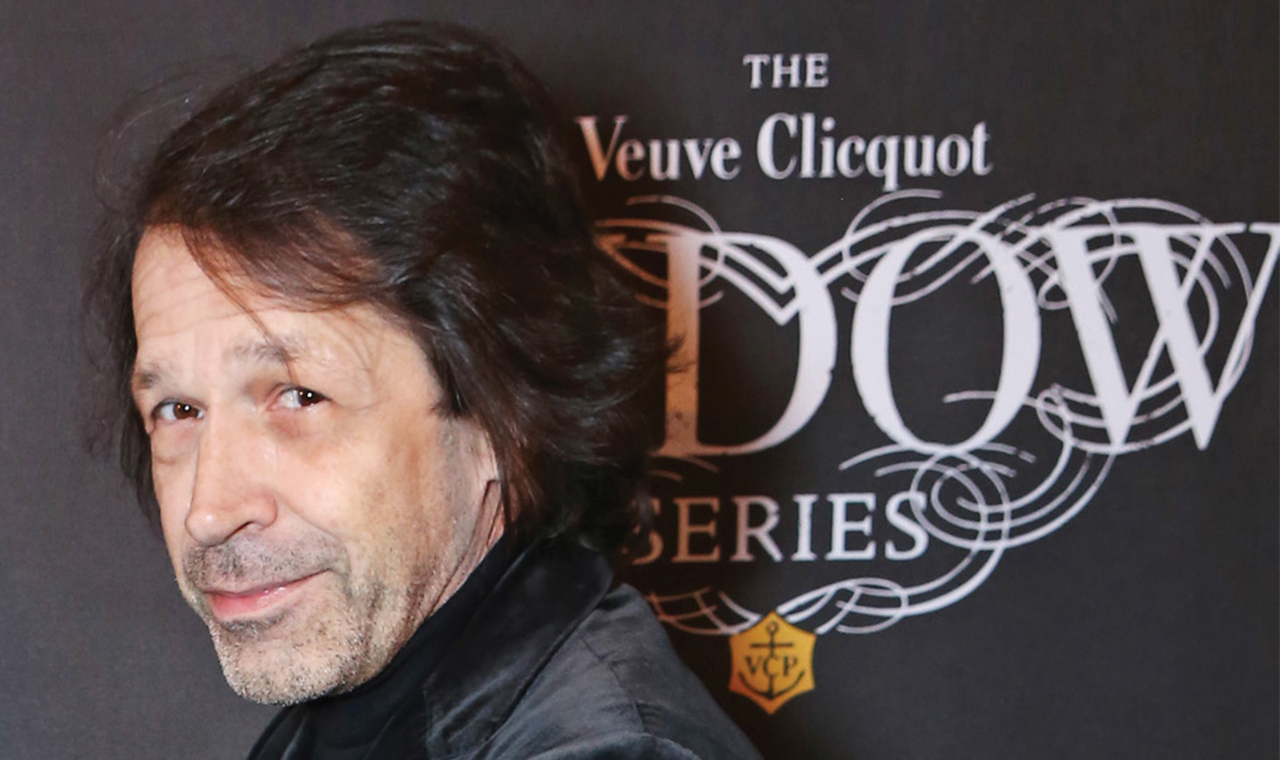Barney Bubbles: The Man Who Designed The 70s
Legendary designer and former Factory Records co-director Peter Saville pays tribute to the artist whose work with Hawkwind, The Damned and Elvis Costello helped define the era.

Barney Bubbles was very important, and massively inspirational to me. I never met him, but I think of Barney just as a true, genuine, intuitive talent. He was the real deal.
I was at school with [fellow designer] Malcolm Garrett and Malcolm was really into Hawkwind – this was about 1970 or ’71. And through the covers of Hawkwind I was seeing the work of Barney Bubbles. The album cover was the principal means of visual stimulation for our generation. Unless you came from a very informed or privileged family background, contemporary art or even fashion were not things you would know much about. But album covers were a remarkably important gateway to information, for any kind of visual avant-garde.
In the 60s Barney was in the midst of things, here in London. Then he transitioned between hippie and punk. He was a genius. In another world, say in New York, Barney would have been an artist automatically. He was just instinctive and intuitive and astonishingly talented. He was innately aware of what was going on, and what might be the visual analogy or counterpoint to that. Most designers don’t have this constant message or statement of feeling or ongoing flow of things that they wish to express. But Barney was an artist. Malcolm and I always felt Barney was much more talented than us.

Barney performed graphic design in the same spirit as we understand fashion designers working now: with an awareness, a sense of self, a statement of your own to make, and a very wide-reaching net of sources and references. But also with a sense of nowness. It’s the sense of nowness that matters. He was extraordinarily hip. It was hipness that guided him. Everything I ever did I thought was really obvious because I could see it coming – that’s why I did it. And Barney saw stuff coming. Something is weird, you haven’t seen it before, but you like it. Why? Because its timing is right. That’s how fashion works.
I’d imagine Barney felt punk coming. There were older people who weren’t that impressed with punk, but if you were 15 or 16 and not aware of these more subversive fringes in rock, then punk represented you. It’s appropriate to think of punk as a kind of coup d’état in youth culture. But some of the older ones felt it too. Barney felt it. [Factory Records boss] Tony Wilson felt it. Malcolm McLaren saw it coming.

The Hawkwind covers are amazing, the ones that open out like wings. But it was Elvis Costello’s Armed Forces that really got me. It’s an act of contemporary kitsch, like a mash-up that we are familiar with in digital culture. The elephant is a quote from David Shepherd, a famous wildlife artist who made a fortune painting iconic African scenes. The originals sold for thousands of pounds, but also they were reproduced as prints in really significant numbers. It’s in a certain kind of middle-class living room across the world. So along with using proofing strips, Jackson Pollock, splash paint, Constructivism, along with everything else, Barney throws in a bit of David Shepherd. It’s really off the wall, and incredibly modern.
All these things are the visual equivalent of sampling. They are quotes. That elephant is profoundly ironic, and irony is almost entirely dependent on some kind of reference. It’s also educational. What Barney was doing was sending me off to make sure I knew the references, and I know from talking to people over the years that my own work had the same influence on my fledgling audience. They became more interested in visual culture and graphic arts.
Sign up below to get the latest from Classic Rock, plus exclusive special offers, direct to your inbox!
We were, until recently, very bad on visual art, and architecture, and fashion in this country. But our pop music culture, and the art colleges, provided this crucible of invention and creativity. That’s where the attitude and inclination and initiative is formed. And people like Barney are kind of heroes and avatars for younger people.

We were, until recently, very bad on visual art, and architecture, and fashion in this country. But our pop music culture, and the art colleges, provided this crucible of invention and creativity. That’s where the attitude and inclination and initiative is formed. And people like Barney are kind of heroes and avatars for younger people.
Barney died in 1983, before graphic designers became the new pop stars. But if he was still around today, Levi’s would have found him to do stuff; Saatchi’s would have found him. He would have maybe been invited to design tailplanes for British Airways. All kinds of amazing things. He could have done them because he had that innate talent, and he would have stayed hip.
It’s woeful that he hasn’t been more appreciated. This was the real Pop Art at the end of the 20th century. Barney was a very significant and influential artist, much more significant and influential than many people walking around today with the label of ‘artist’.
